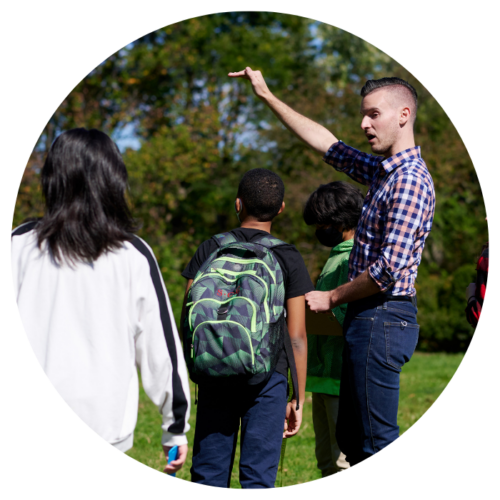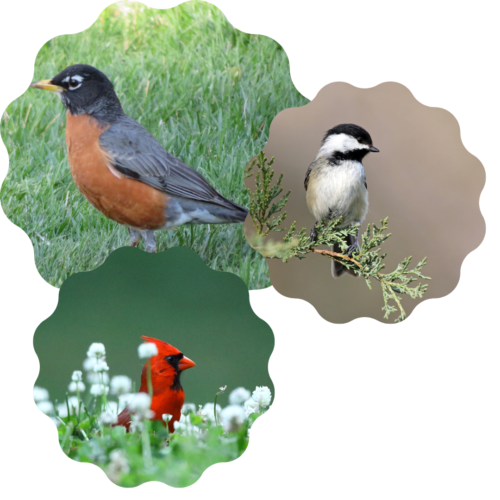 In an era dominated by screens and social media, teenagers are increasingly disconnected from the natural world. Yet, nature has the power to transform their mental health. By spending time outdoors, teens can reduce stress, improve focus, and cultivate emotional intelligence. In this post, we’ll examine the science behind nature’s benefits and provide actionable tips for parents, educators, and teens themselves to incorporate outdoor time into daily life.
In an era dominated by screens and social media, teenagers are increasingly disconnected from the natural world. Yet, nature has the power to transform their mental health. By spending time outdoors, teens can reduce stress, improve focus, and cultivate emotional intelligence. In this post, we’ll examine the science behind nature’s benefits and provide actionable tips for parents, educators, and teens themselves to incorporate outdoor time into daily life.
Research has consistently shown that spending time outdoors has numerous benefits for our mental health such as:
Reduced Stress: Exposure to natural environments has been shown to lower cortisol levels, blood pressure, and heart rate, all indicators of stress.
Boosted Mood: Being outdoors can increase feelings of pleasure and relaxation, and even reduce symptoms of depression.
Lowered Stress Levels: Exposure to natural environments has been shown to lower cortisol levels, blood pressure, and heart rate, all indicators of stress.
Emotional Intelligence Benefits: Nature exposure can improve self-awareness, self-regulation, and emotional expression.
Improved Mental Clarity: Spending time outdoors can help improve our thinking, reasoning, and problem-solving abilities by allowing our minds to relax and recharge.
Being in nature can improve our mood, reduce feelings of stress and anger, and even help alleviate symptoms of anxiety and depression. This is especially important for teens as anxiety disorders affect 1 in 3 teens, and 1 in 5 experience depression.
By prioritizing mental health during adolescence, teens can build a strong foundation for future well-being, academic success, and fulfilling relationships.
As someone who works with teens or has a teenager at home, you have the opportunity to help them find ways to connect with nature and improve their mental health.
If you’re looking to incorporate more outdoor time into your routine, start small. You don’t need to drastically change your routine to get the boost of being outdoors. Here are some ideas to get you started:
Take Your Lesson Outdoors
 Whatever you had already planned for the day’s lesson, do it outdoors! Everyone will get the benefits of being in nature, and you don’t have to add anything to the lesson plan.
Whatever you had already planned for the day’s lesson, do it outdoors! Everyone will get the benefits of being in nature, and you don’t have to add anything to the lesson plan.
Sitting outdoors for even just 10-15 minutes can reduce stress and anxiety, improve mood, reduce symptoms of ADHD and PTSD, and enhance cognitive function. Plus, natural light boosts serotonin levels, regulating emotions and sleep.
Soil Touching
Soil touching decreases cortisol levels, boosts serotonin and dopamine, and promotes relaxation. It also supports emotional well-being, increases feelings of calmness and gratitude, and improves sleep quality. Gardening, walking barefoot, or simply sitting on the ground can provide these benefits.
Focused Breathing
Using breathing techniques are an effective way to reduce stress. You can do these outside in addition to other activities, or simply close your eyes and imagine your favorite outdoor spot while you’re doing these exercises.
Box Breathing is any easy exercise because you can do this one in any position. It’s also easy to remember because each step is four seconds long:
- Inhale for 4 seconds.
- Hold for 4 seconds.
- Exhale for 4 seconds.
- Hold for 4 seconds.
Another exercise to try is Diaphragmatic Breathing, also known as Belly Breathing:
- Find a comfortable seated or lying position.
- Place one hand on your belly and the other on your chest.
- Inhale slowly through your nose (4-5 seconds)
- Exhale slowly through your mouth (4-5 seconds)
- Repeat for 5-10 minutes.
Bird watching
 The focus required for bird watching improves concentration, attention, and mindfulness, while the sense of accomplishment and connection with nature boosts self-esteem and overall well-being. Furthermore, birding’s social aspect provides space for connection and friendship, helping to combat loneliness and isolation.
The focus required for bird watching improves concentration, attention, and mindfulness, while the sense of accomplishment and connection with nature boosts self-esteem and overall well-being. Furthermore, birding’s social aspect provides space for connection and friendship, helping to combat loneliness and isolation.
You don’t have to go far to observe birds – it’s as easy as looking out the classroom window and watching birds on a nearby tree or in a nest they’ve made on a windowsill.
Click here for tips on urban birdwatching.
Stargazing
Stargazing is a unique way to foster a sense of connection to nature and the universe. You’ll have to encourage students to do this in the evening when they’re at home, but it’s a different kind of outdoor activity that can captivate teens’ curiosity and wonder.
Gazing up at the stars provides perspective, calming the mind and sparking imagination. It is an opportunity for teens to explore mysteries of the universe, contemplate life’s big questions, and connect with something larger than themselves.
Plant Care
 Caring for plants offers a unique combination of hands-on learning, relaxation, and creative expression that resonates with teenagers, helping them develop valuable life skills and a deeper connection to nature. Gardening tasks encourage mindfulness, focus, and problem-solving, while fostering a sense of control and accomplishment.
Caring for plants offers a unique combination of hands-on learning, relaxation, and creative expression that resonates with teenagers, helping them develop valuable life skills and a deeper connection to nature. Gardening tasks encourage mindfulness, focus, and problem-solving, while fostering a sense of control and accomplishment.
Popular plant options for teens include low-maintenance plants, herbs, small flowering plants, and microgreens.
Caring for plants can be as simple as growing some herbs from seed in the classroom, or you can take on a bigger project of establishing a school garden. To get started, check out how to start a classroom garden with minimal resources and how to grow plants in small spaces.
This is also a great service-learning project to improve your school’s green space through PLT’s GreenSchools Investigations or the “Improve Your Place”/ “Mejora tu Lugar” activity from PLT’s Explore Your Environment: K-8 Activity Guide / Explora tu Ambiente: Guía de Actividades K-8.
Incorporate Technology
Teens are digital natives and you don’t need to completely abandon technology in order to connect teens to nature. Mobile devices and apps can help enhance outdoor experiences by giving teens the tools to understand the world around them. Here are a few to check out:
Geocaching
Geocaching is a fun activity to get teens exploring the outdoors with a mission. It’s a unique outdoor experience that combines technology, adventure, and exploration.
Using GPS-enabled devices, teens go on treasure hunts, solving puzzles and clues to find hidden caches. Geocaching fosters teamwork, problem-solving, and critical thinking, while getting them outdoors.
There are over 3 million active caches worldwide and they can be hidden anywhere – street signs, in the nooks of trees, historic sites, and more. There are also nature-themed caches highlighting local wildlife. You can even add your own cache to the database!
Art Projects That Connect to Nature
Outdoor art provides a unique opportunity for teens to express themselves, develop their skills, and connect with others and their surroundings. Here are some ideas for art projects to do with teens:
- Paint vibrant designs on rocks and stones.
- Press flowers to create delicate, preserved art.
- Collect natural materials to create collages.
- Paint large-scale murals with a connection to nature.
- Draw temporary masterpieces on sidewalks using chalk.
- Use natural materials to create sculptures or installations.
- Capture the beauty of nature with a photography project.
Citizen Science
Citizen science, or “community science,” refers to data collected by the general public that is typically shared with scientists to help identify where we’re making progress and where we need to focus our attention.
The more data we have to help conserve the planet and its resources, the better, and scientists need our help!
These community science projects often involve going outdoors and observing the natural world in your area. They are a great opportunity for teens to work together, develop research skills, and be part of something bigger than themselves.
From tackling plastic pollution to supporting the global food supply to observing local bird species and more—check out some of the ways you can get your students involved in a community science project.
Nature is a powerful tool for promoting teen mental health and well-being. By incorporating outdoor activities teens can reduce stress, boost mood, and cultivate resilience. Let’s make sure teens have access to green spaces and encourage them to get outside and explore. By doing so, we can help them develop a lifelong love for nature and all the mental health benefits that come with it.


